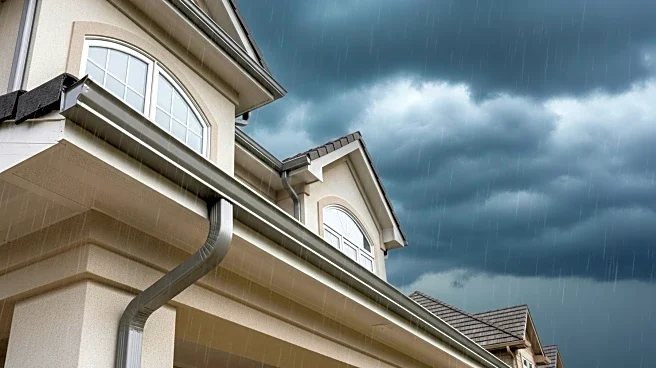What's Happening?
Homeowners in the UK are increasingly installing deeper gutters to manage more intense rainfall, a trend driven by climate change. Roofers and drainage experts report that 75% of clients are opting for double-sized guttering to handle stormwater. This adaptation is a response to the increased frequency and intensity of downpours, which have led to flooding in towns like Chippenham, Wiltshire. The outdated official guttering standards, based on data from the 1940s to 1960s, are being challenged by experts who suggest a 10% increase in capacity now and a 40% increase by 2050-2070. Governments and the Environment Agency are pledging new measures to address these challenges.
Why It's Important?
The shift towards larger gutters highlights the growing impact of climate change on infrastructure and daily life. As storms become more frequent and intense, traditional drainage systems are proving inadequate, leading to increased flooding risks. This has significant implications for urban planning and environmental policy, as governments must adapt to changing weather patterns. The demand for enhanced guttering systems reflects a broader need for infrastructure upgrades to mitigate climate-related damage, affecting homeowners, businesses, and local economies.
What's Next?
Governments and environmental agencies are expected to implement new measures to address the challenges posed by increased rainfall. This may include updating official standards for guttering and drainage systems to better cope with future climate conditions. Homeowners may continue to invest in infrastructure improvements, such as rainwater gardens, to manage stormwater locally. The political pressure for action is likely to increase as more communities experience flooding, prompting further policy changes and investments in climate resilience.
Beyond the Headlines
The adaptation of guttering systems is a microcosm of the broader challenges posed by climate change. It underscores the need for proactive measures in infrastructure planning and environmental management. The political dimension of flooding, as communities demand action, highlights the intersection of climate science and public policy. Long-term shifts in building standards and urban design may be necessary to ensure resilience against future climate impacts.











